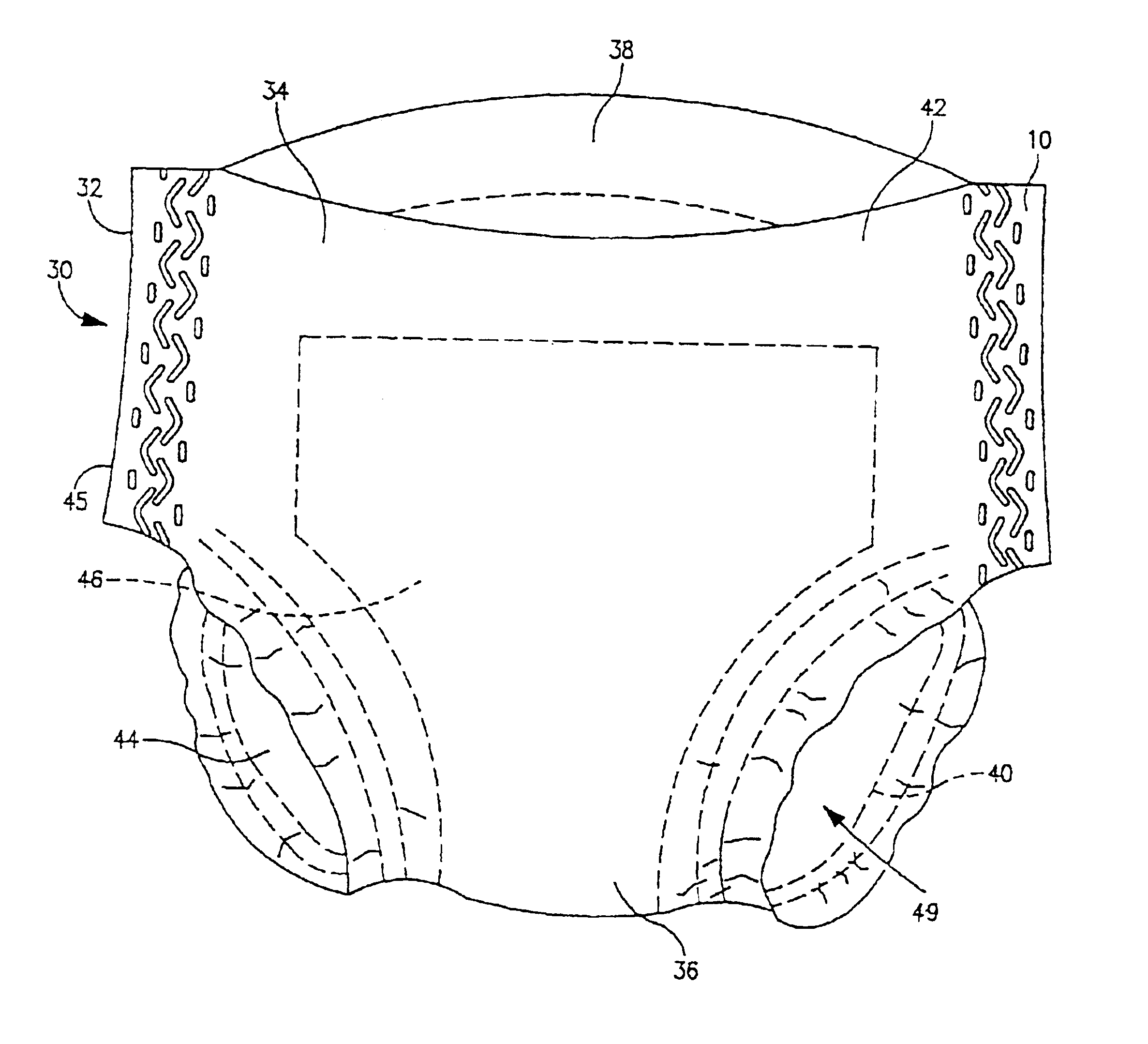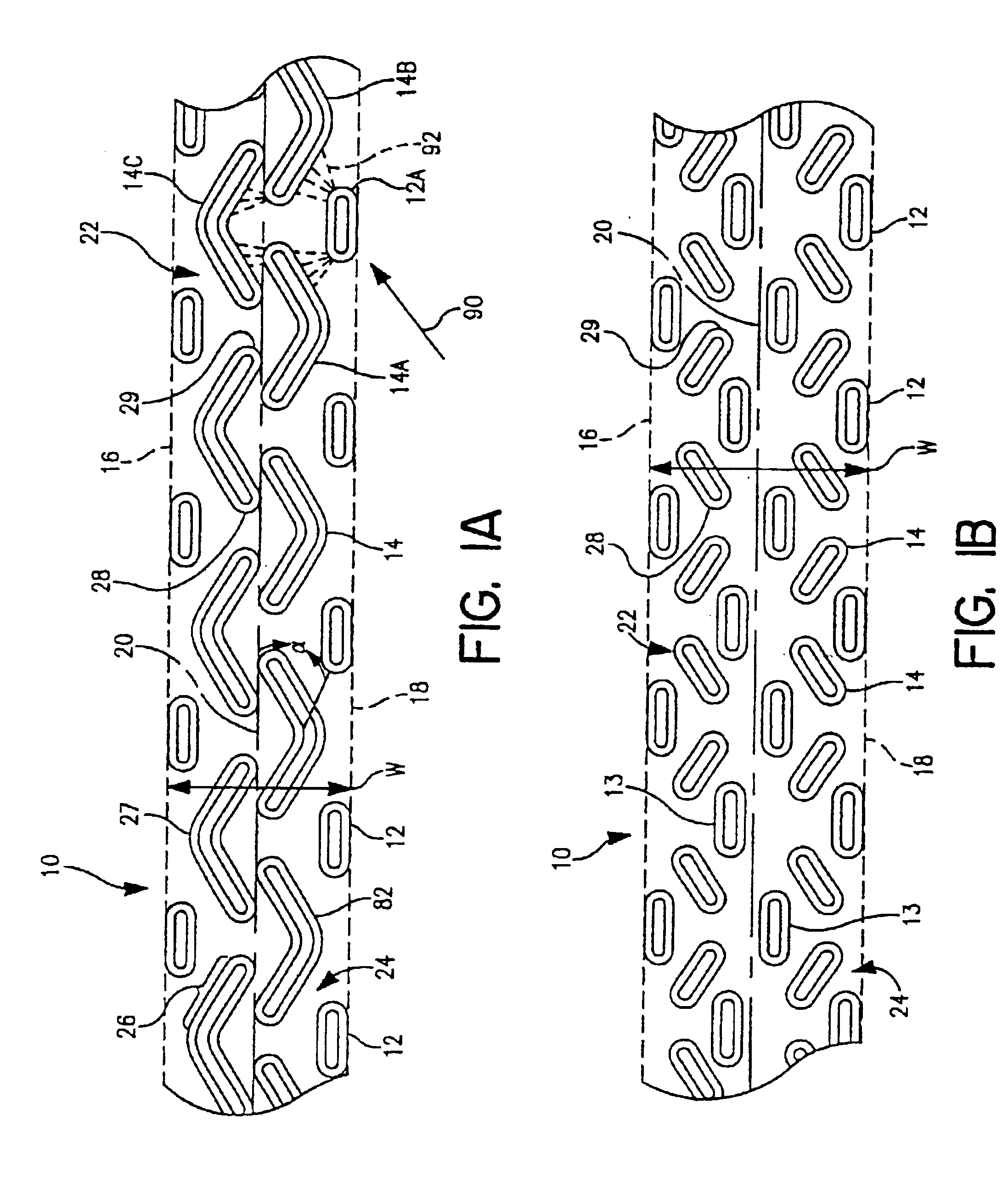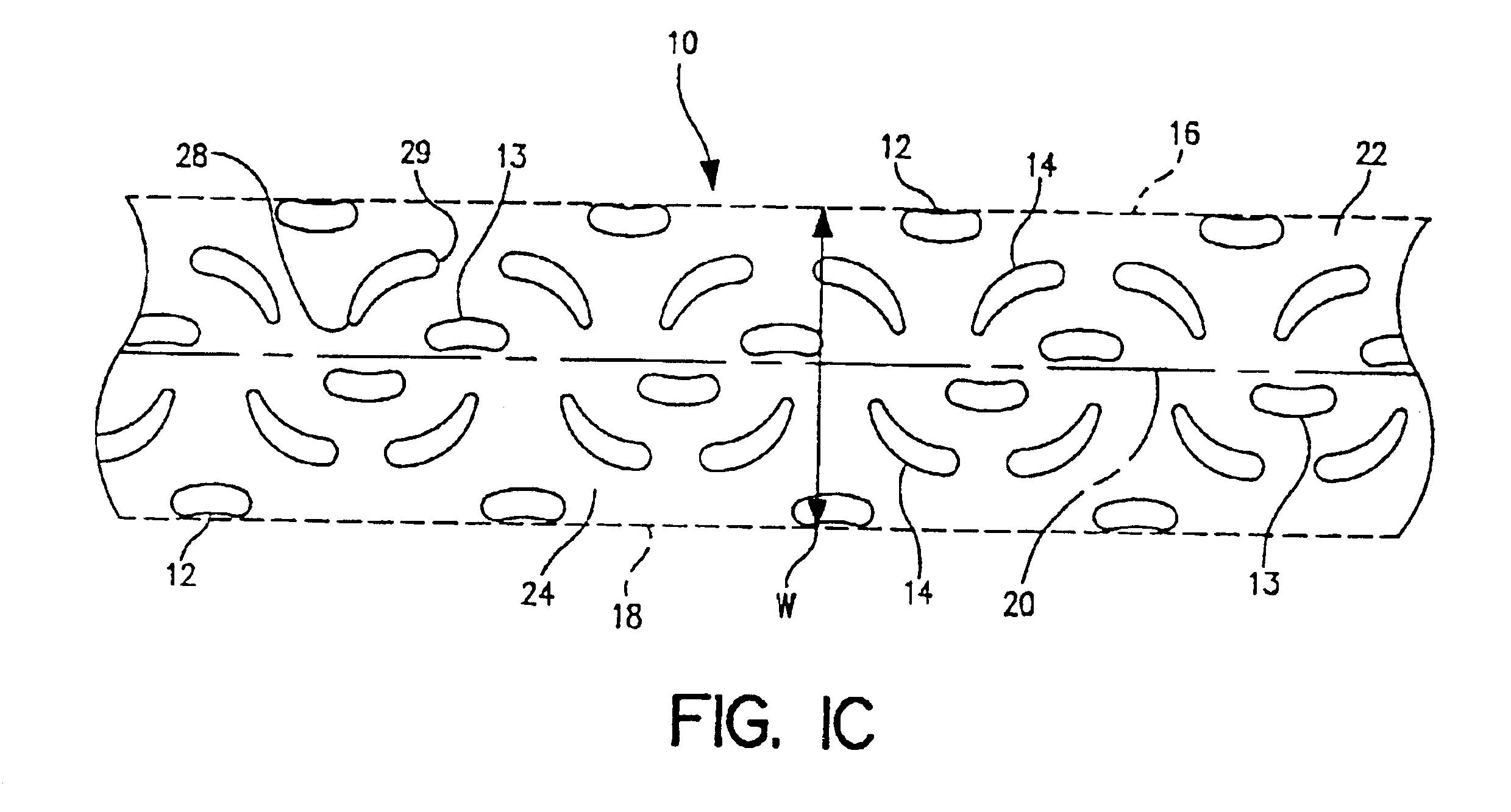Method of making tear-resistant adhesive/combination bond pattern
a bonding pattern and adhesive technology, applied in the field of bonding composites, can solve the problems of prone to fracture at the bonding location under, affecting the bonding effect, etc., and achieve the effect of dissolving the stress
- Summary
- Abstract
- Description
- Claims
- Application Information
AI Technical Summary
Benefits of technology
Problems solved by technology
Method used
Image
Examples
Embodiment Construction
FIGS. 1A and 1B show preferable embodiments of bond pattern 10 of the invention, which is described more fully in application Ser. No. 09 / 651,042 filed Aug. 30, 2000, of common assignment herewith, and which is herein incorporated by reference in its entirety. Bond pattern 10 has a first side edge 16, a second side edge 18, and a central longitudinal axis 20 which divides the bond pattern 10, as defined by the bond elements, into a first opposing pattern combination 22 on a first side of axis 20 and a second opposing pattern combination 24 on an opposing second side of axis 20. Bond pattern 10 has a pattern length defined in terms of distance measured along central longitudinal axis 20, and a pattern width “W” represented by distance between first side edge 16 and second side edge 18 of bond pattern 10. Correspondingly, the overall area of bond pattern 10 is defined as the area which participates in absorbing and dissipating, by operation of bond pattern 10, stresses received into t...
PUM
| Property | Measurement | Unit |
|---|---|---|
| angles | aaaaa | aaaaa |
| angles | aaaaa | aaaaa |
| angles | aaaaa | aaaaa |
Abstract
Description
Claims
Application Information
 Login to View More
Login to View More - R&D
- Intellectual Property
- Life Sciences
- Materials
- Tech Scout
- Unparalleled Data Quality
- Higher Quality Content
- 60% Fewer Hallucinations
Browse by: Latest US Patents, China's latest patents, Technical Efficacy Thesaurus, Application Domain, Technology Topic, Popular Technical Reports.
© 2025 PatSnap. All rights reserved.Legal|Privacy policy|Modern Slavery Act Transparency Statement|Sitemap|About US| Contact US: help@patsnap.com



